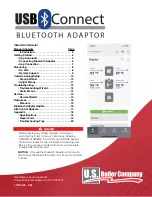
T
ABLE
2
CONTINUED
: PXE C
ONFIGURATION
O
PTIONS
Option
Name
Possible
Values
Description
Default
Boot Failure
Next Boot
Device
Reboot
If a network boot cannot be completed, choose
whether MBA will reboot the PC or allow the PC to
boot from the next boot device. On a PC with a
BBS-compliant BIOS, the next boot device is the
next device in the boot order list. On a PC that does
not have a BBS-compliant BIOS, the next boot
device is normally the hard disk.
Next Boot
Device
Booting
Messages
(User
Defined)
Choose the message text and hot key that is used
to instruct the user how to boot locally when the
Default Boot is set to Network, and how to boot
from the network when the Default Boot is set to
Local. Not available with BIOS-integrated MBA.
“Press H to
boot from
Hard Disk”
“Press N to
boot from
Network”
T
ABLE
3: N
ET
W
ARE
C
ONFIGURATION
O
PTIONS
Option
Name
Possible
Values
Description
Default
Protocol
802.2,
802.3,
Ethernet II
Choose the specific frame type for NetWare boot
methods.
802.3
Default
Boot
Network
Local
Choose whether MBA will perform a network boot or
a local hard disk boot by default. If Network boot is
chosen as the default, the Local Boot Message is
displayed at boot time (if a bootable device exists
and Local Boot is enabled). If Local boot is chosen
as the default, the Network Boot message is
displayed at boot time. Not available with BBS-
BIOS.
Local
Local Boot
Enabled
Disabled
Choose between allowing or disallowing a local boot
from a hard disk or diskette. When local booting is
disabled, the PC is forced to boot from the network
even if a bootable diskette is inserted in drive A:, or
if the local hard disk contains an active partition.
Not available with BBS-BIOS.
Enabled
Config
Menu
Enabled
Disabled
Choose whether to prevent access to the
Configuration Screen that is built into the MBA
ROM. When Disabled, the Configuration Message is
not displayed. Also, when disabled, the only method
to modify the MBA options is by using the MBACFG
utility.
Enabled
30
















































